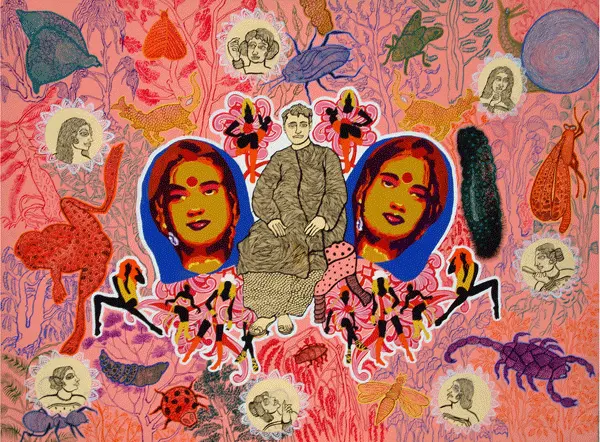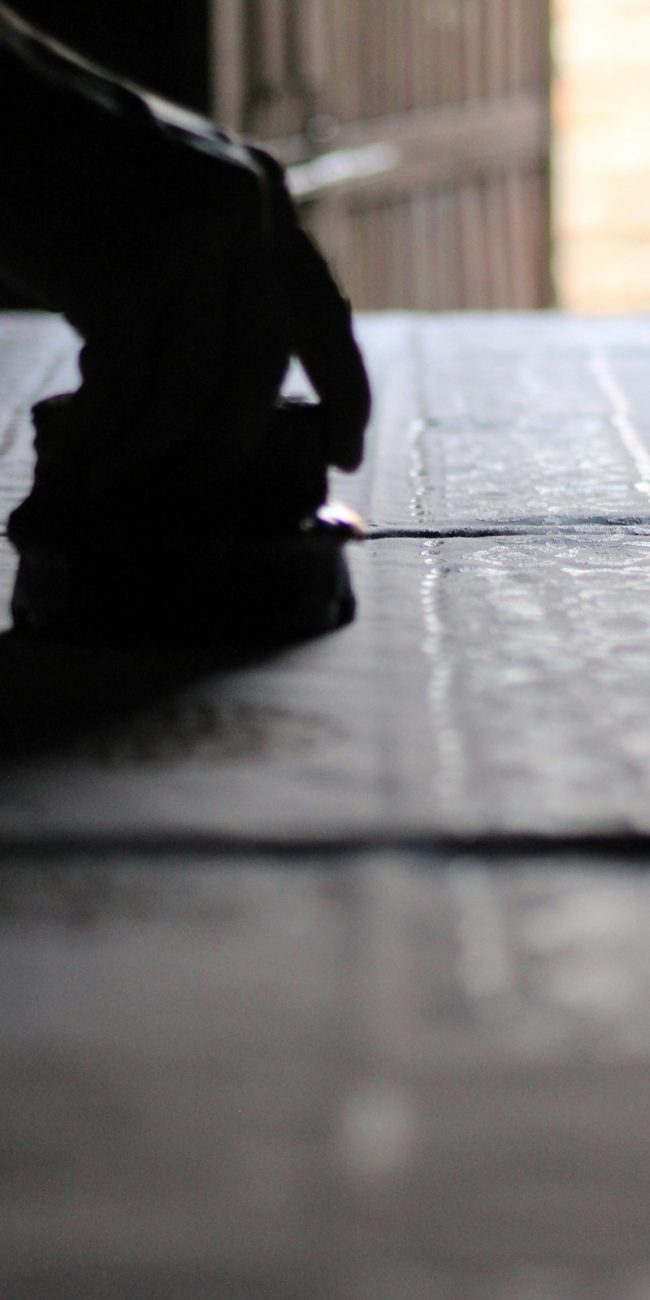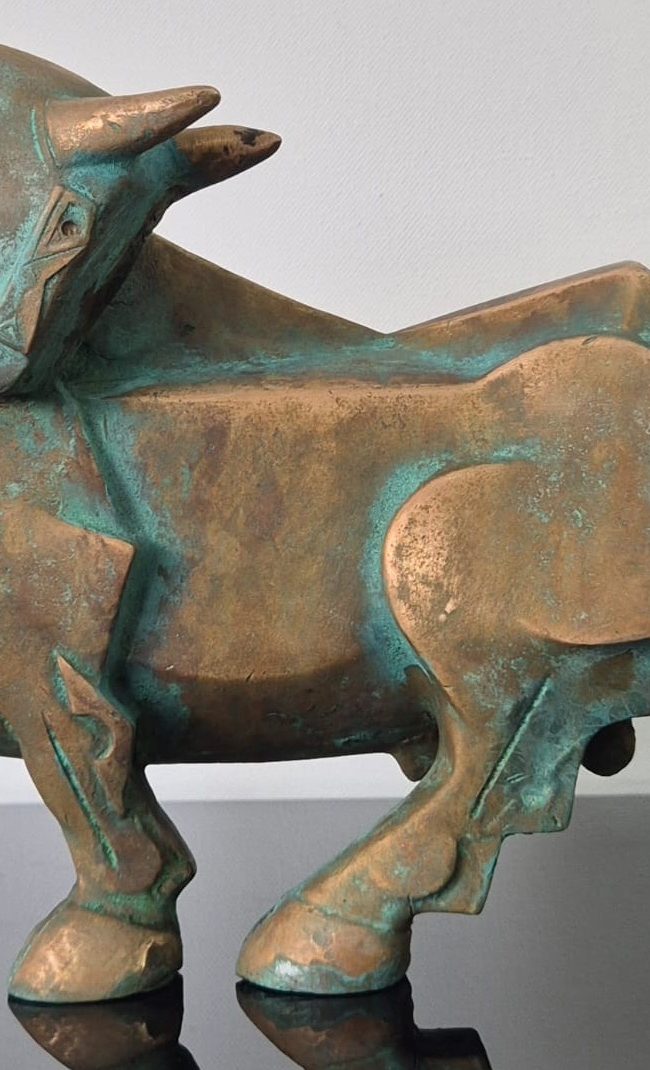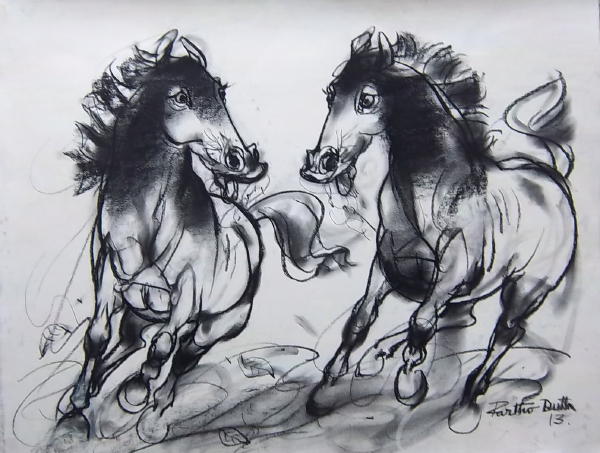
How Ink & Charcoal Art Creates Bold and Expressive Drawings
Whether you’re a beginner or an experienced artist, learning how to use ink and charcoal in art can completely change how you draw and express yourself. Let’s explore why this style works so well, how to use it, and a few tips to get started.
Ink vs. Charcoal: What’s the Difference?

(Untitled | Manjit Bawa | 10.75″ x 14.75″ | Pen Ink on paper)
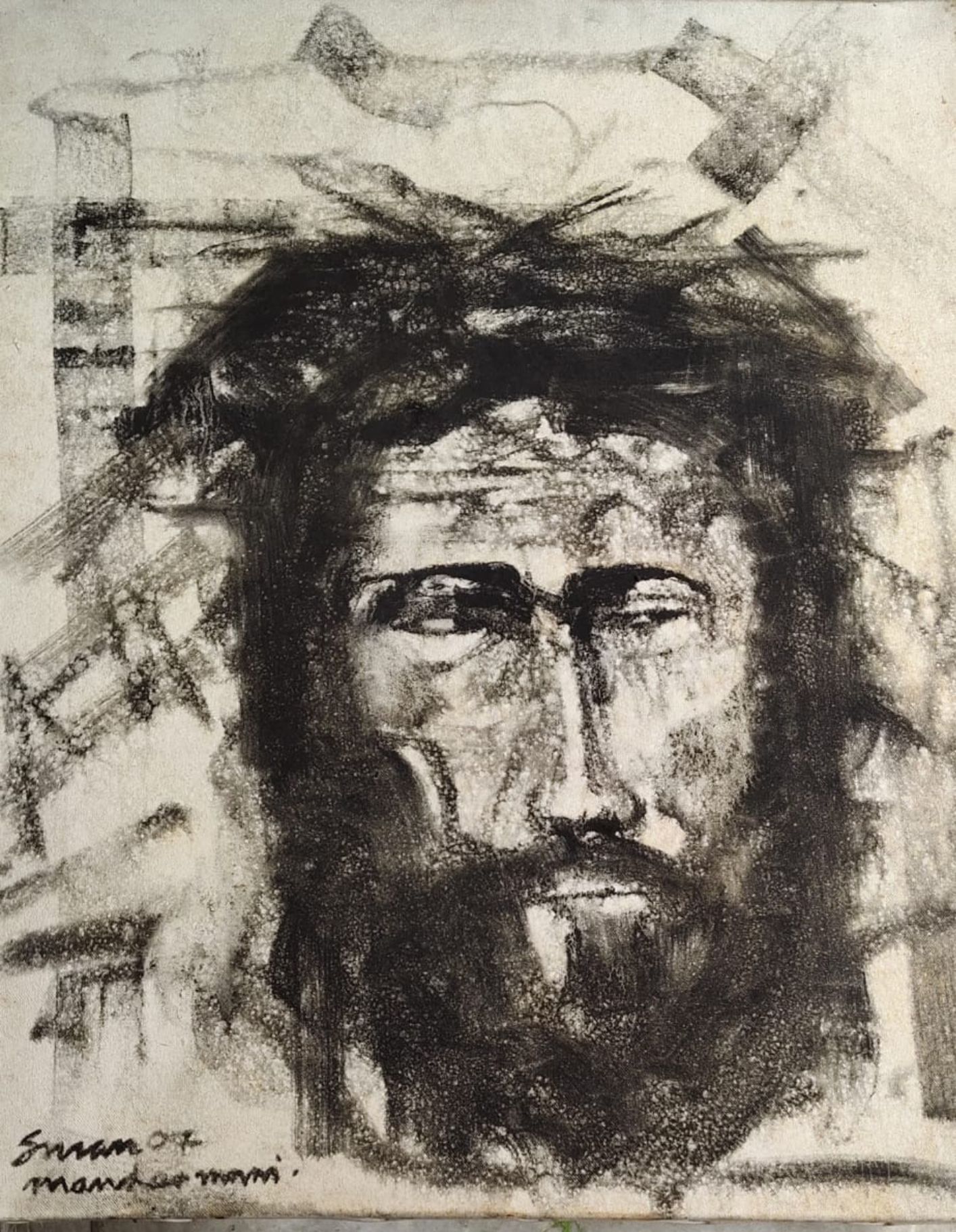
(Untitled | Suman Roy | 30″ x 24″ | Charcoal on Canvas)
Although ink and charcoal art often go hand in hand, they are very different tools.
Ink is strong, sharp, and permanent. It’s perfect for outlines, fine details, and dramatic contrast. Artists often use pens, brushes, or nibs to create clean, dark lines that stand out. These are great for ink drawings or bold ink illustration work.
Charcoal, on the other hand, is soft and dusty. It’s best for blending, shading, and creating mood. With charcoal, you can smudge, erase, and rework as much as you like. This makes it perfect for building depth and volume, especially in charcoal sketches.
So, the difference between ink and charcoal in art is simple:
- Ink is bold and clear.
- Charcoal is soft and flexible.
Together, they create balance and drama—light and dark, soft and sharp.
What Makes Ink and Charcoal Special?
Both ink and charcoal belong to traditional art media and have been used by artists for hundreds of years. But what makes them special today?
Ink illustration brings control, clarity, and strength to any drawing. Every line matters.
Charcoal art offers freedom to experiment with texture and shading. It’s great for creating soft transitions and shadows.
When you combine the two, you get the best of both worlds. This is why combining ink and charcoal for a dramatic effect is so popular among modern artists. The contrast between ink’s solid lines and charcoal’s soft forms creates a strong, emotional impact.
How to Use Ink and Charcoal Together?
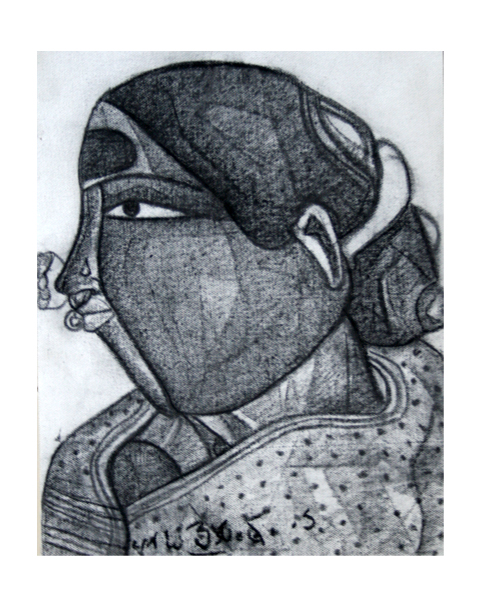
(Untitled-1 | Thota Vaikuntam | 9″ x 12″ | Charcoal on Canvas)
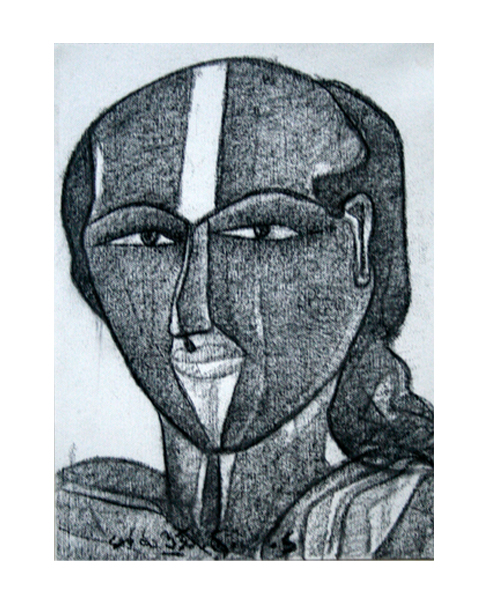
(Untitled-2 | Thota Vaikuntam | 9″ x 12″ | Charcoal on Canvas)
Learning how to use ink and charcoal in art starts with knowing how they work together. Here’s a simple way to begin:
- Sketch with charcoal first. Use light strokes to plan your composition and build up shadows.
- Add ink after. Outline key features, define edges, and add bold details.
- Let them mix. In some areas, let the charcoal and ink blend slightly to create interesting textures.
- Leave white space. The untouched paper helps create highlights and contrast.
- This layering approach allows you to build rich, expressive artwork using just a few simple tools.
Bold Techniques in Ink and Charcoal Drawing
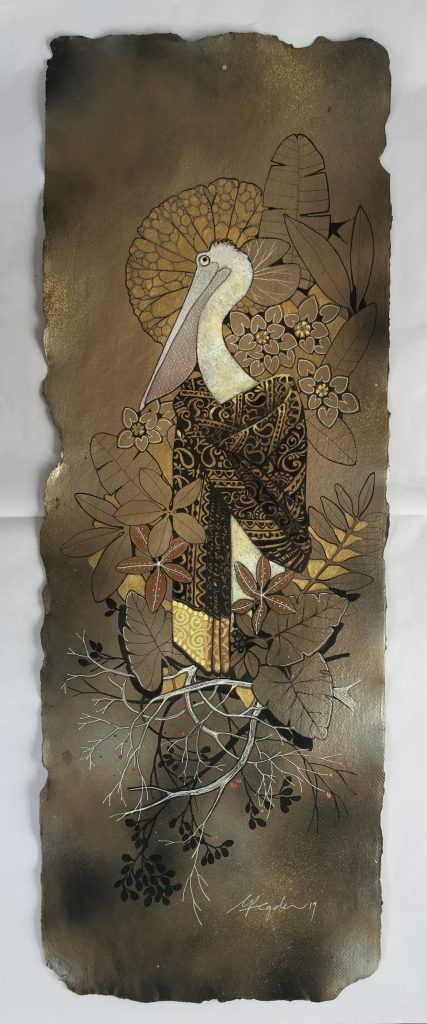
(Untitled | Ganapati Hegde | 12″ x 32″ | Acrylic and ink on Handmade paper)
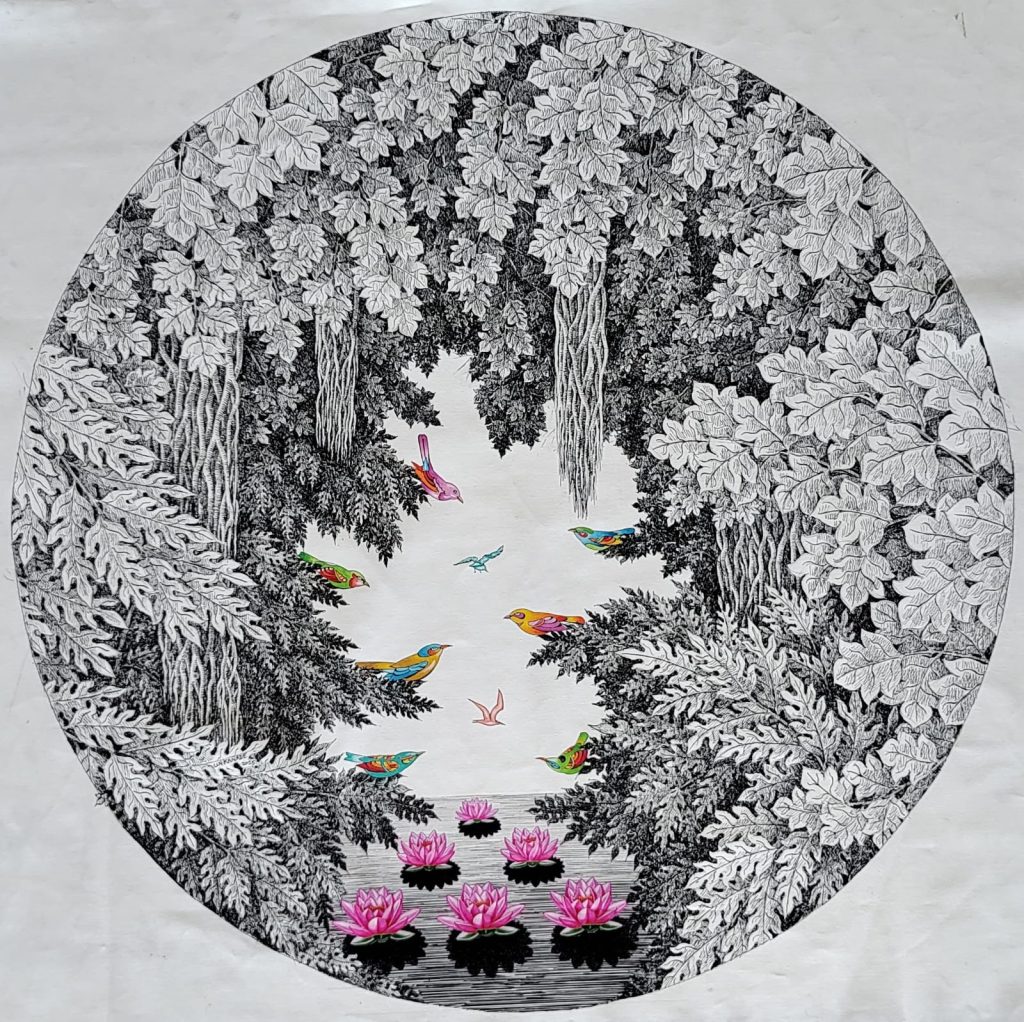
(Untitled | Umakant Kanade | 36″ diameter | Ink on canvas)
Once you’re comfortable, you can try some bold techniques in ink and charcoal drawing:
- Dry brush technique with ink: Use very little ink on a dry brush for rough, textured strokes.
- Blended backgrounds: Use charcoal to create moody or cloudy backgrounds, then add ink on top.
- Reverse highlights: Don’t use white—leave parts of the paper untouched to act as light.
- Masking: Use tape or stencils to protect parts of the paper while you work with either medium.
These tricks help make your artwork more dynamic and personal. Over time, you’ll develop your own favorite techniques for working with this unique mix of tools.
Charcoal and Ink: Easy Tips for Beginners
If you’re just starting, don’t worry. These charcoal and ink techniques for beginners will help you get comfortable:
- Use thick, textured paper—it handles both ink and charcoal well.
- Start small. Practice on simple shapes or still-life sketches before trying big pieces.
- Keep tissues or cotton swabs nearby to blend charcoal smoothly.
- Try mixing hard and soft charcoal for different effects.
- Let the ink dry completely before adding more layers or charcoal over it.
These easy steps will help you explore traditional media for expressive drawing styles without feeling overwhelmed.
Why This Style Works So Well?
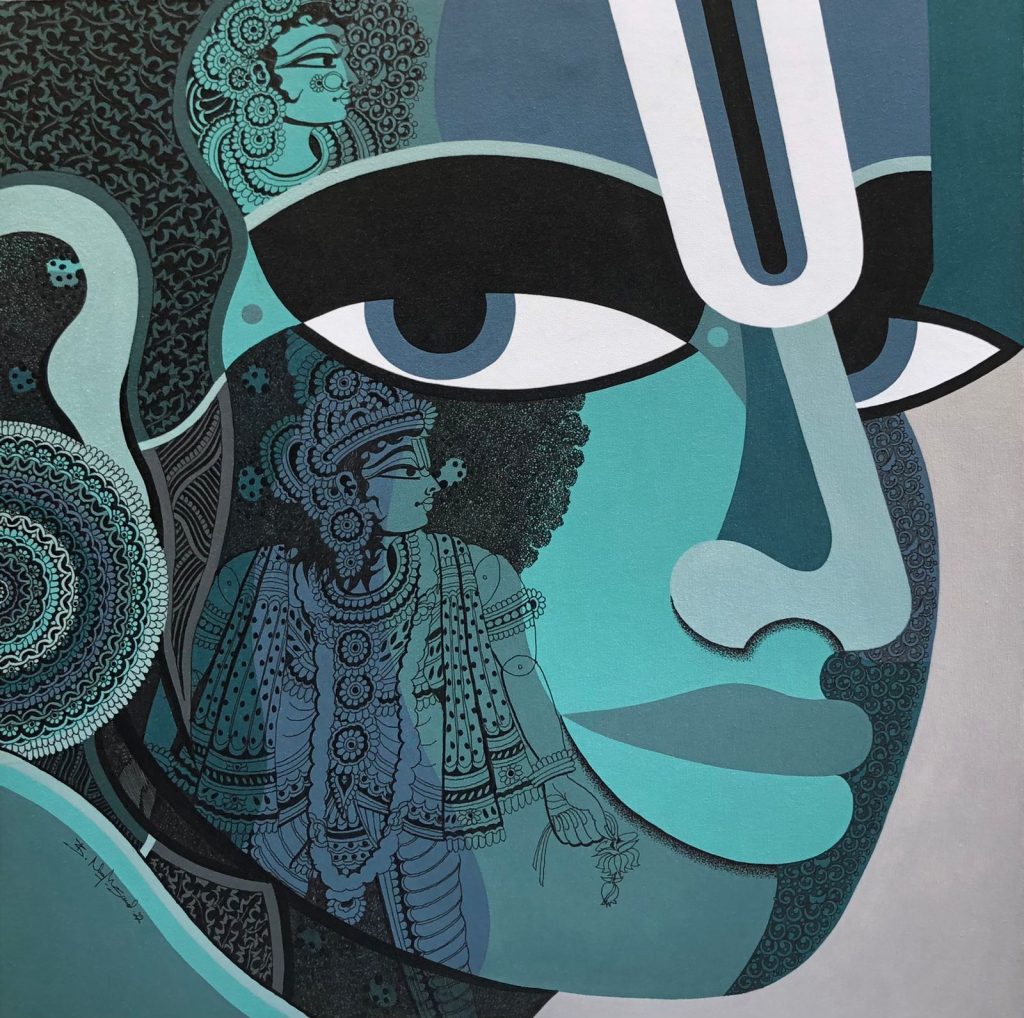
(Untitled | Nagesh Goud | 24″ x 24″ | Ink and acrylic on canvas)
What makes ink and charcoal art so powerful? The answer lies in its simplicity. By removing color, the focus shifts to form, light, and feeling. Artists use this black-and-white media for emotional art that connects with people deeply and honestly.
- Charcoal brings softness, sadness, calm, or mystery.
- Ink brings energy, confidence, and clarity.
Together, they help artists show emotion, tell stories, and create pieces that feel bold and meaningful. This is why many artists enjoy creating expressive artworks with charcoal and ink—because it helps them speak without words.
Final Thoughts
To sum it up, ink and charcoal art is a beautiful mix of control and freedom. Ink drawings give you strong, clear shapes, while charcoal art brings feeling and texture. When used together, they open up a world of creative possibilities.
So go ahead—grab a pen, a piece of charcoal, and a sheet of paper. Let the tools guide you, and don’t be afraid to make bold marks. That’s how true art begins.
At AIM Gallery, we invite you to explore our featured artworks on Instagram. Feel free to DM us with any questions or artwork inquiries; we’re always excited to connect, collaborate, and support fellow art enthusiasts.




